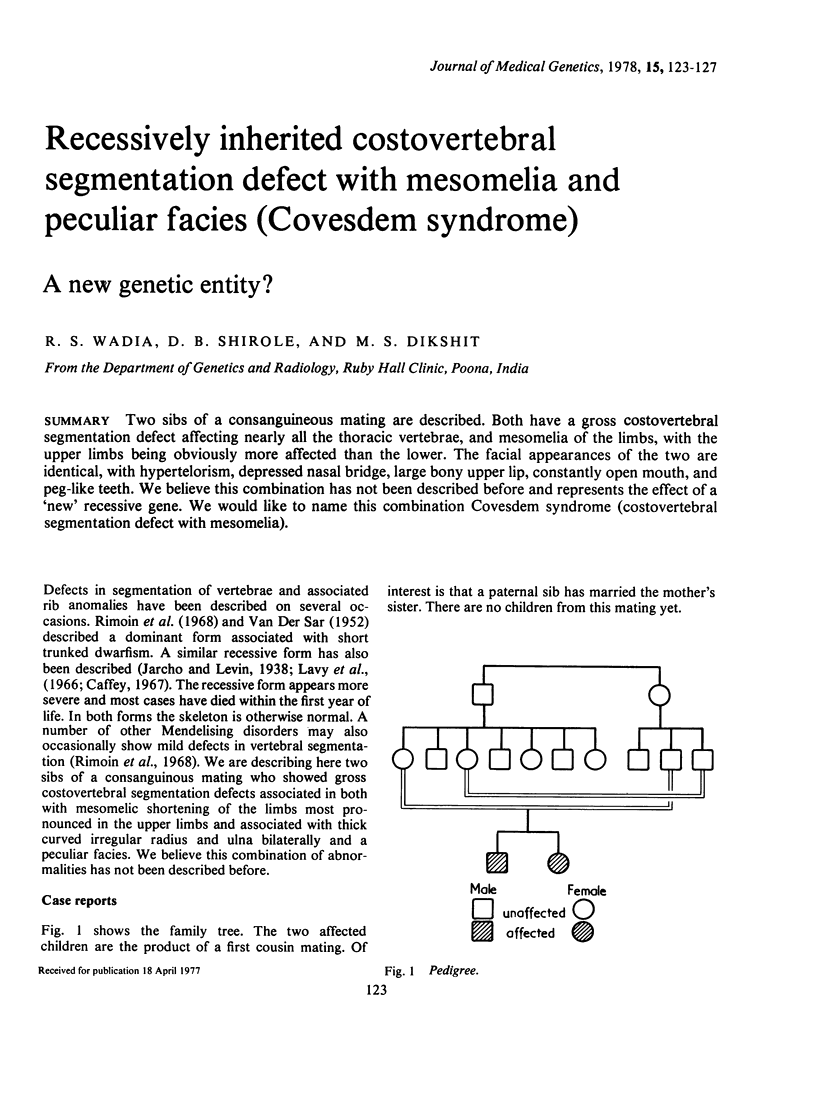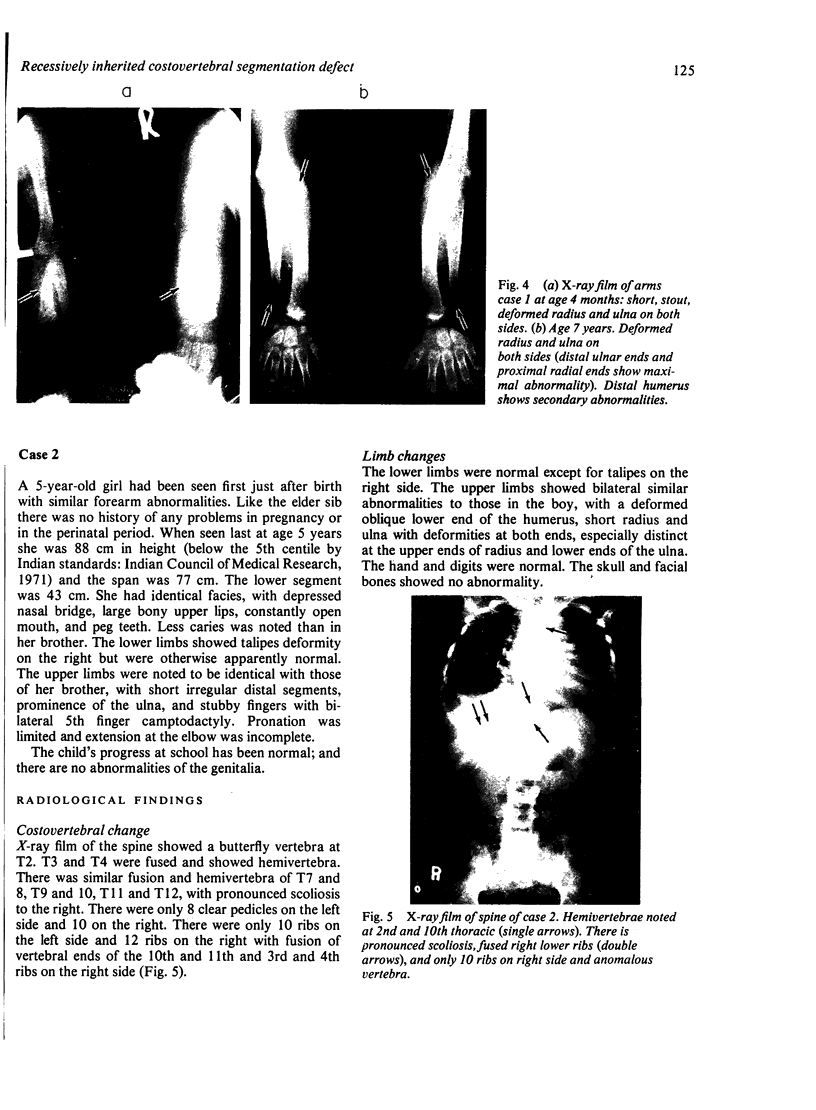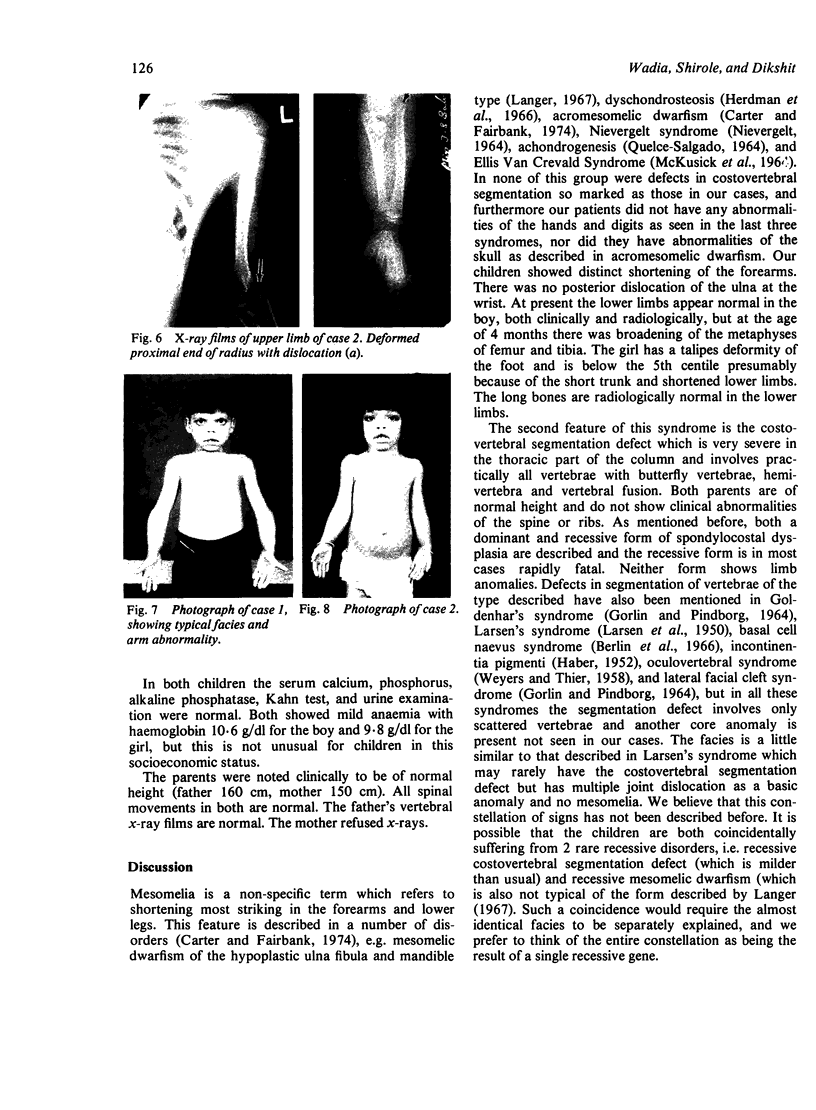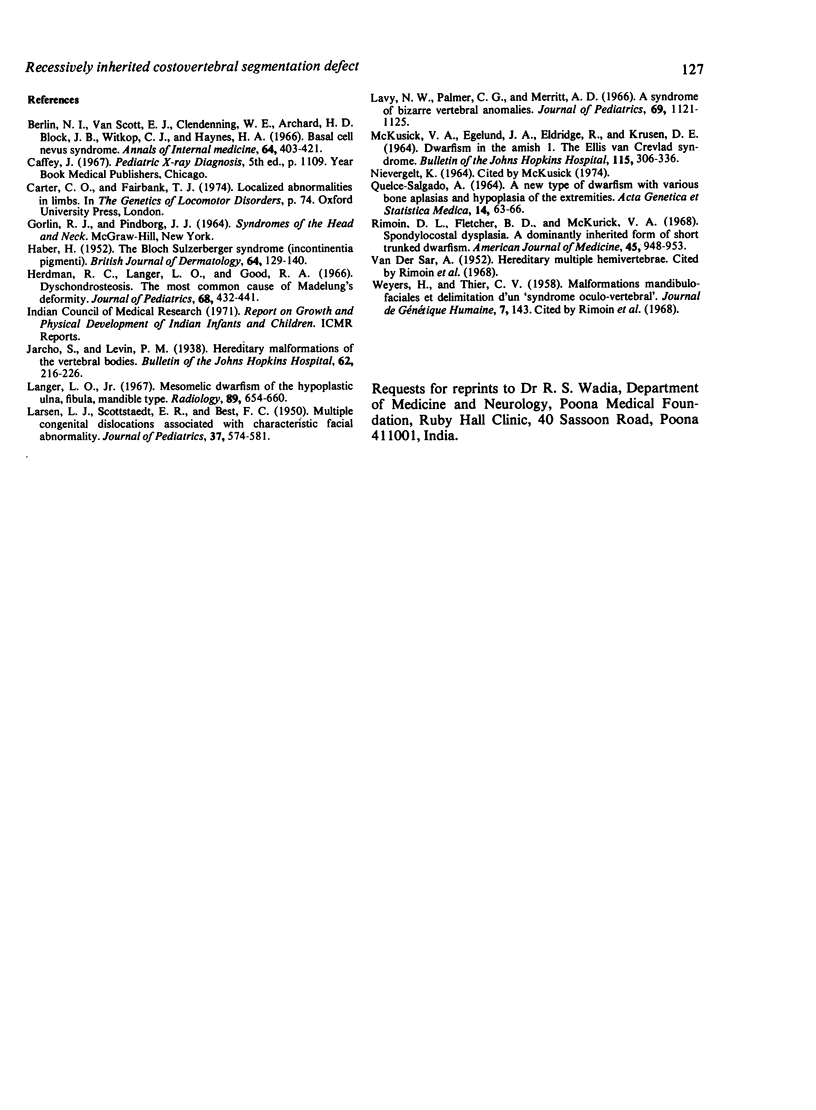Abstract
Two sibs of a consanguineous mating are described. Both have a gross costovertebral segmentation defect affecting nearly all the thoracic vertebrae, and mesomelia of the limbs, with the upper limbs being obviously more affected than the lower. The facial appearances of the two are identical, with hypertelorism, depressed nasal bridge, large bony upper lip, constantly open mouth, and peg-like teeth. We believe this combination has not been described before and represents the effect of a 'new' recessive gene. We would like to name this combination Covesdem syndrome (costovertebral segmentation defect with mesomelia).
Full text
PDF




Images in this article
Selected References
These references are in PubMed. This may not be the complete list of references from this article.
- Berlin N. I., Van Scott E. J., Clendenning W. E., Archard H. O., Block J. B., Witkop C. J., Haynes H. A. Basal cell nevus syndrome. Combined clinical staff conference at the National Institutes of Health. Ann Intern Med. 1966 Feb;64(2):403–421. doi: 10.7326/0003-4819-64-2-403. [DOI] [PubMed] [Google Scholar]
- HABER H. The Bloch-Sulzberger syndrome (incontinentia pigmenti). Br J Dermatol. 1952 Apr;64(4):129–140. doi: 10.1111/j.1365-2133.1952.tb16176.x. [DOI] [PubMed] [Google Scholar]
- Herdman R. C., Langer L. O., Good R. A. Dyschondrosteosis. The most common cause of Madelung's deformity. J Pediatr. 1966 Mar;68(3):432–441. doi: 10.1016/s0022-3476(66)80247-0. [DOI] [PubMed] [Google Scholar]
- LARSEN L. J., SCHOTTSTAEDT E. R., BOST F. C. Multiple congenital dislocations associated with characteristic facial abnormality. J Pediatr. 1950 Oct;37(4):574–581. doi: 10.1016/s0022-3476(50)80268-8. [DOI] [PubMed] [Google Scholar]
- Langer L. O., Jr Mesomelic dwarfism of the hypoplastic ulna, fibula, mandible type. Radiology. 1967 Oct;89(4):654–660. doi: 10.1148/89.4.654. [DOI] [PubMed] [Google Scholar]
- Lavy N. W., Palmer C. G., Merritt A. D. A syndrome of bizarre vertebral anomalies. J Pediatr. 1966 Dec;69(6):1121–1125. doi: 10.1016/s0022-3476(66)80304-9. [DOI] [PubMed] [Google Scholar]
- MCKUSICK V. A., EGELAND J. A., ELDRIDGE R., KRUSEN D. E. DWARFISM IN THE AMISH I. THE ELLIS-VAN CREVELD SYNDROME. Bull Johns Hopkins Hosp. 1964 Oct;115:306–336. [PubMed] [Google Scholar]
- QUELCE-SALGADO A. A NEW TYPE OF DWARFISM WITH VARIOUS BONE APLASIAS AND HYPOPLASIAS OF THE EXTREMITIES. Acta Genet Stat Med. 1964;14:63–66. doi: 10.1159/000151832. [DOI] [PubMed] [Google Scholar]
- Rimoin D. L., Fletcher B. D., McKusick V. A. Spondylocostal dysplasia. A dominantly inherited form of short-trunked dwarfism. Am J Med. 1968 Dec;45(6):948–953. doi: 10.1016/0002-9343(68)90193-9. [DOI] [PubMed] [Google Scholar]
- WEYERS H., THIER C. J. Malformations mandibulo-faciales et délimitation d'un syndrome oculo-vertébral. J Genet Hum. 1958 Oct;7(3):143–173. [PubMed] [Google Scholar]








